Feeding Lovebirds
MY TIPS ABOUT FEEDING LOVEBIRDS BY Miguel from AGAPORNIS ARIAS A GOOD DIET FOR BETTER QUALITY OF LIFE We need to take into consideration that a good diet will help our lovebirds to life longer and with a better quality
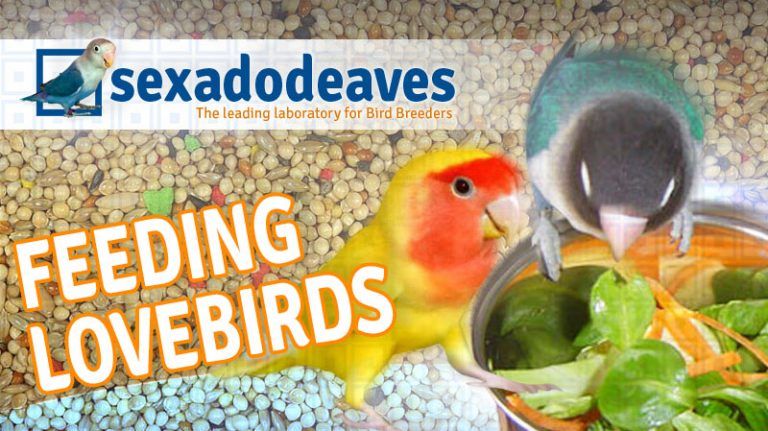
MY TIPS ABOUT FEEDING LOVEBIRDS
BY Miguel from AGAPORNIS ARIAS
A GOOD DIET FOR BETTER QUALITY OF LIFE
We need to take into consideration that a good diet will help our lovebirds to life longer and with a better quality of life. Lovebirds need a balanced diet to be healthy and strong during a long time, just like humans.
What would happen to us if we eat pizza and hamburger every day? The same happens with lovebirds. They need to get used to eat a balanced diet since they are babies.
It is well known that in nature lovebirds mainly eat seeds, that is why I think we should not remove them from their diet. Nevertheless, their diet should not be based on seeds alone as they contain fat (which is necessary during some parts of the life of a lovebird). Other type of food should be added to their diet to make it more complete.
A good quality mixture We should provide our lovebirds with good quality mixture. In order to know if the mixture is good we need to take into account:
-The variety of seeds the mixture contains and how big are those seeds, -We should avoid sunflower seeds as they are high in fat (I do not recommend them for loverbirds, although they can be used in special occasions as treats).
Some people prefer to give their lovebirds unpacked mixture. If you prefer to do so, try to choose a reliable
brand which has a good blend of seed (look always at the percentage of seeds at the label). An optimal blend would be: Birdseeds 40%, yellow millet 12%, white millet 12%, safflower 8%, buckwheat 4%, hemp 6%, oats 2%, red millet 6%, linseed 6%, and thistle seed 4%. This proportion of seeds is ideal for my lovebird couples. I found it in the mixture of the brand Beyers (Deli Nature), specifically its product Beyers 72 which is of a very good quality.
A COMPLETE DIET WITH PELLETS, VITAMINS, FRUITS AND VEGETABLES
Some people wonder if it is ok to feed lovebirds only with mixture. The answer could be yes, but as I said before it is not advisable for the health and wellbeing of lovebirds. For having a complete diet, apart from the mixture we cannot forget to include pellets, vitamins, fruits and vegetables. A good thing to do would be to put a bird feeder with mixture and another one with pellets and vitamins. Our lovebirds need to get used to eat a lot of types of food since they are young so they eat a varied diet when they become adults. We need to know that lovebirds are sometimes very stubborn and changing their diet can make them stop eating causing their death. If we need to change their diet we would need to do it little by little.
PELLETS
Let’s talk about pellets: in the market we can find a wide range of brands and varieties, each one adapted to the age of the lovebird and the season of the year. We can give those pellets as main food, but they need to get used to eat them when they are still young. Start giving the pellets to them gradually and keep an eye on them to make sure that they are eating correctly. In my aviary I use the brand of pellets called Versele-Laga (Nutribird). There are two types of pellets within this brand, B14 and B18. I use Nutribird B18 because it has a higher amount of proteins.
VITAMINS
We can use vitamins to the diet of our lovebirds as a complement. These vitamins can be added to the water or mixed with pellets and mixture. There are some big brands that are adapted to the necessities of our lovebirds. For this kind of products I recommend you to use the brand Bipal Plus. Since I started to use it I have seem visible improvements in the aviary: more offspring per couple, stronger babies and less casualties.
FRUITS AND VEGETABLES
Twice or three times a week we should include fruits and vegetables in the diet of our lovebirds. Apart from being a great complement for their diet, providing substantial benefits, they will make great treats. We cannot get obsessed if we cannot make our lovebird eat fruits or vegetables because they might not like them or they might not have eaten them while they were young. Also, we can try giving them different types of fruits and vegetables until we find the ones our lovebirds like. For example, my lovebirds love broccoli, spinach and grapes.
Recommended fruit and vegetables for lovebirds: Strawberry, orange, apple, pear, grapefruit, tangerine, lemon, papaya, grapes, red pepper, green pepper, cucumber, broccoli, cauliflower, carrot, escarole, corn, green beans, cannons, artichoke, cabbage, spinach, peas (also the pods), tomato, zucchini, beans (also with pods), tender garlic, celery, lettuce (not many times since it causes diarrhea). Food prohibited for lovebirds: Avocado, potato, pumpkin, milk, meat, soft drinks, alcoholic beverages, chocolates, sweets, salty (food we have added salt), coffee, parsley.
BREEDING PASTE
During breeding season we should give our lovebirds breeding paste. We can also provide them this product the rest of the year. If we decide to give them breeding paste out of the breeding season I would recommend you to use one which contains mainly fruits and during breeding season one containing more egg. From my experience, some of my couples feed their offspring with a combination of mixture, pellets and breeding paste, although it is logical that the offspring fed with breeding paste grow much better. In the market we will find many brands of breeding paste, I prefer giving my lovebirds a blend of two: Bipal Power and Bipal Psittacidae, which are elaborated in cooperation with the best lovebird breeders nowadays.
This diet can be completed with a cuttlebone, which provides calcium to our lovebirds and fresh water every day.


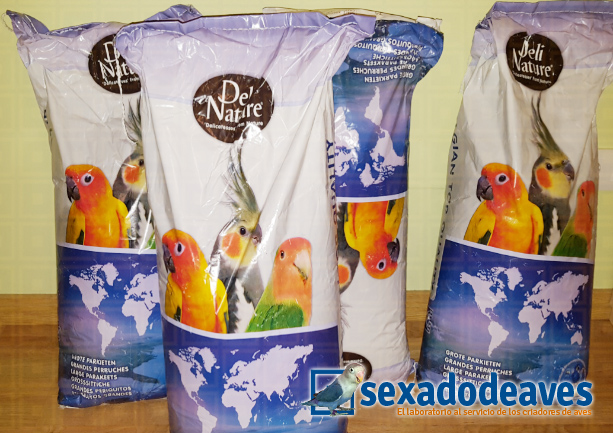
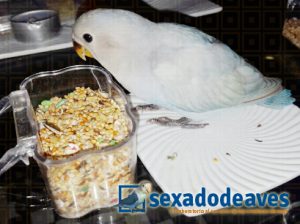
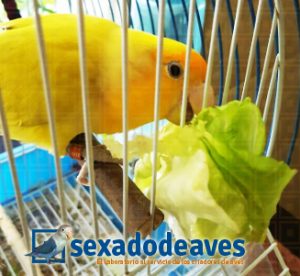
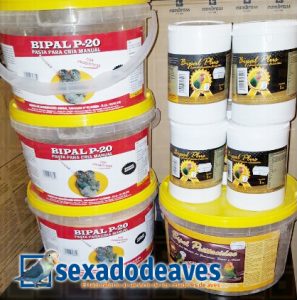

lluvia guerra April 5, 2022
Are lovebirds agapornis?